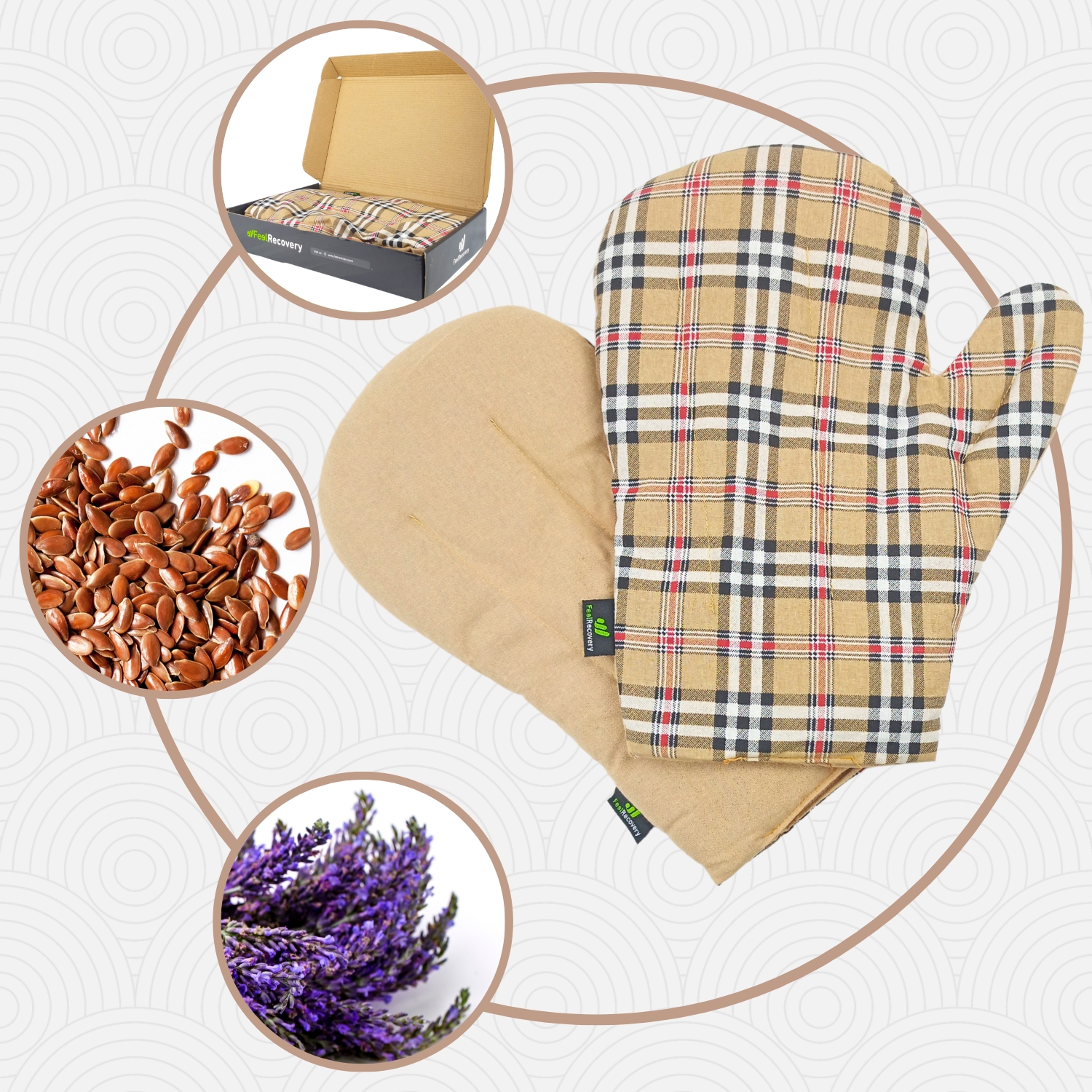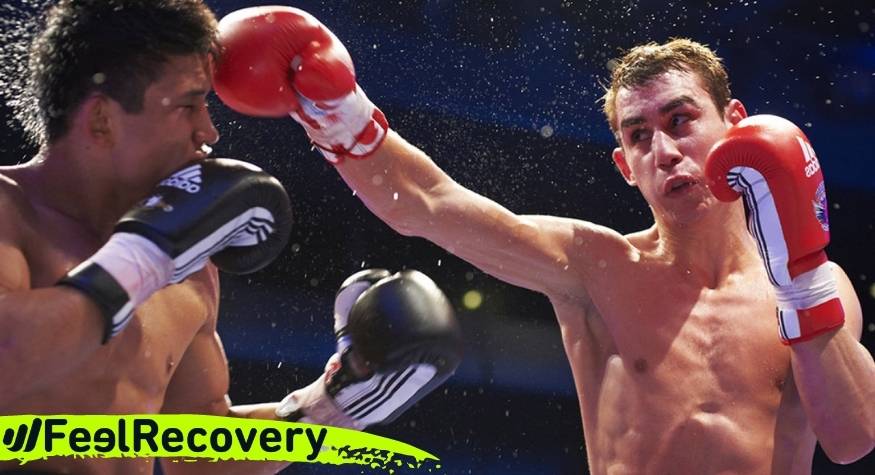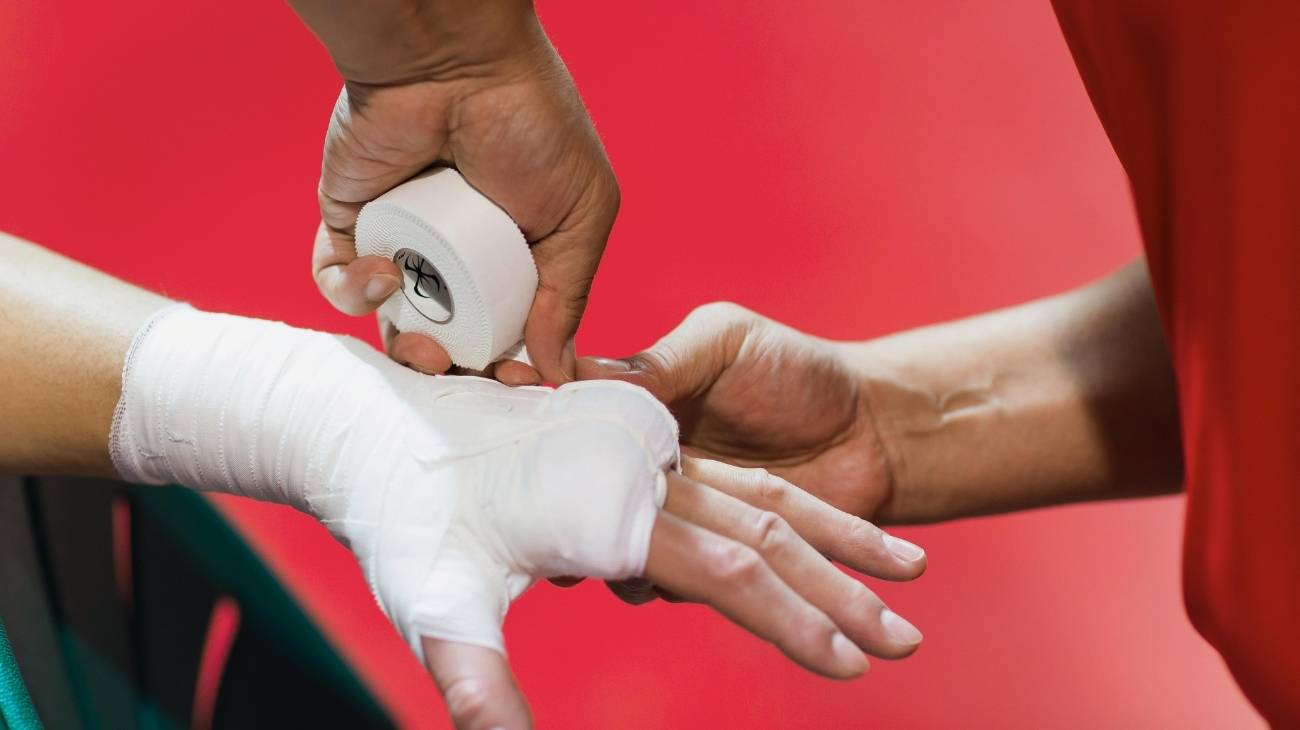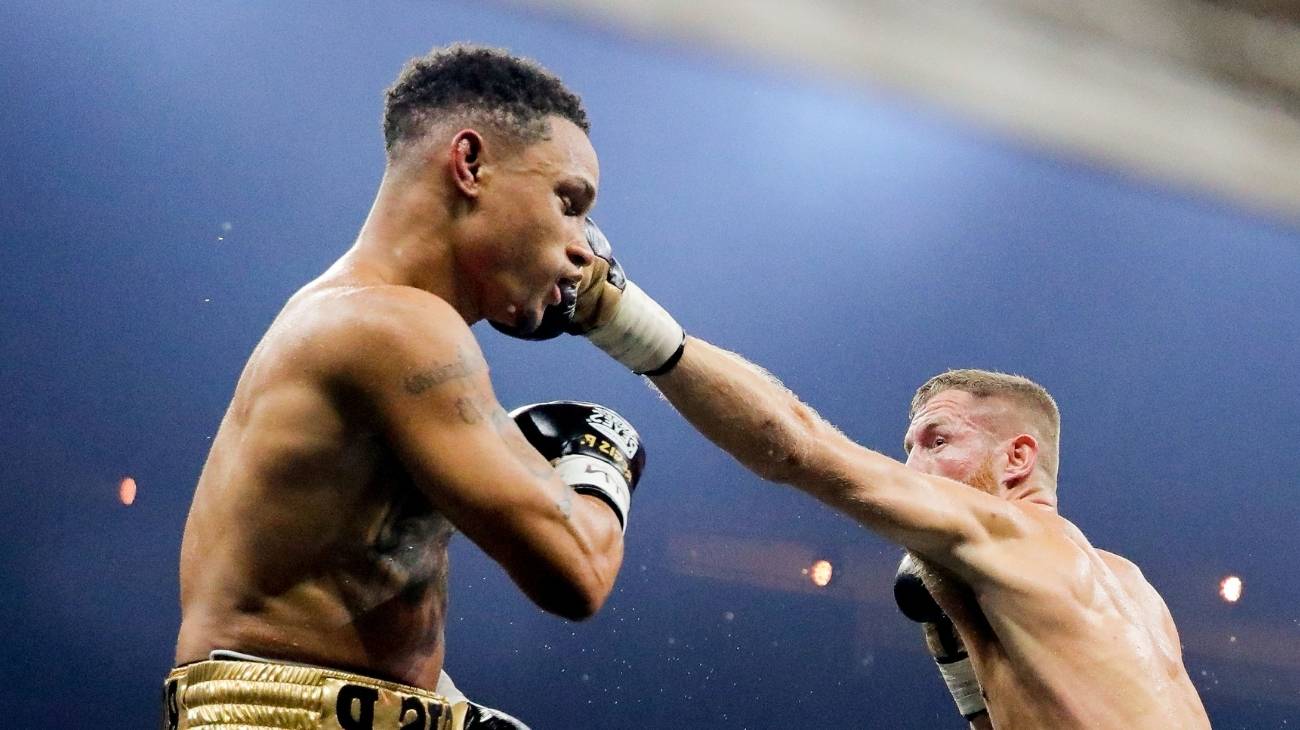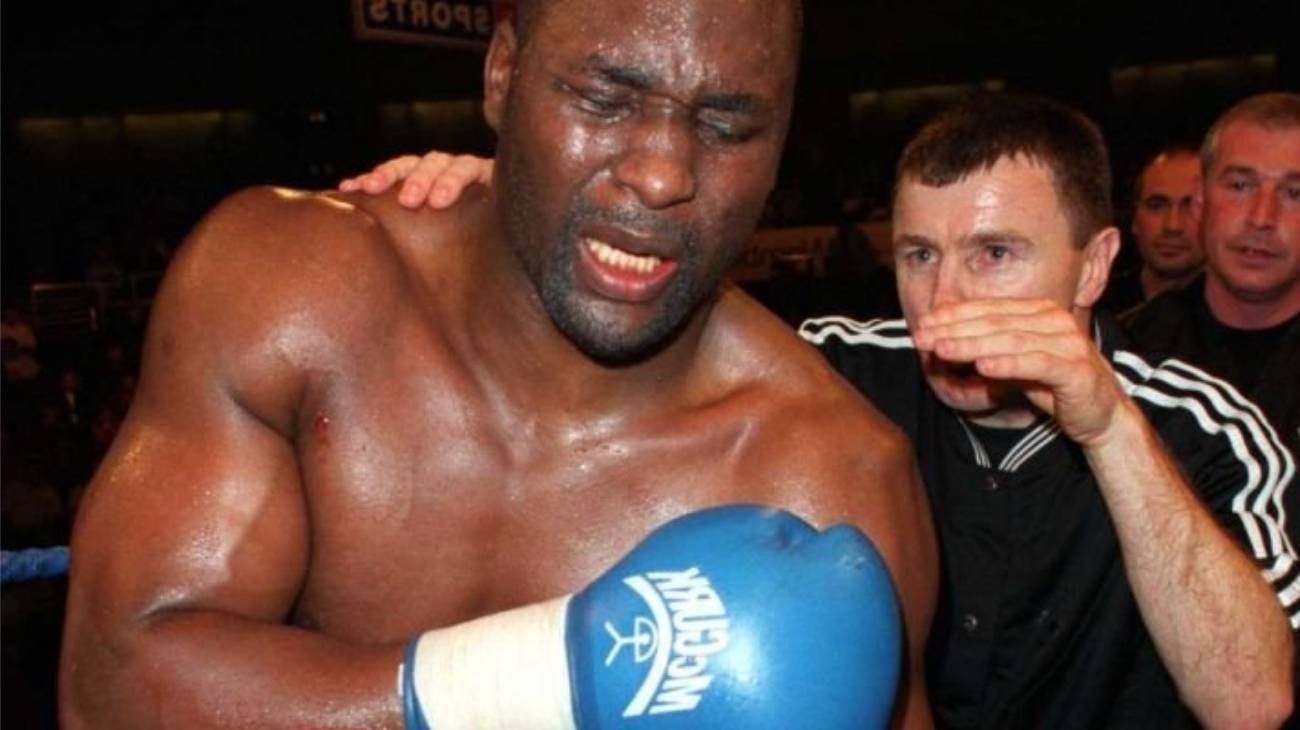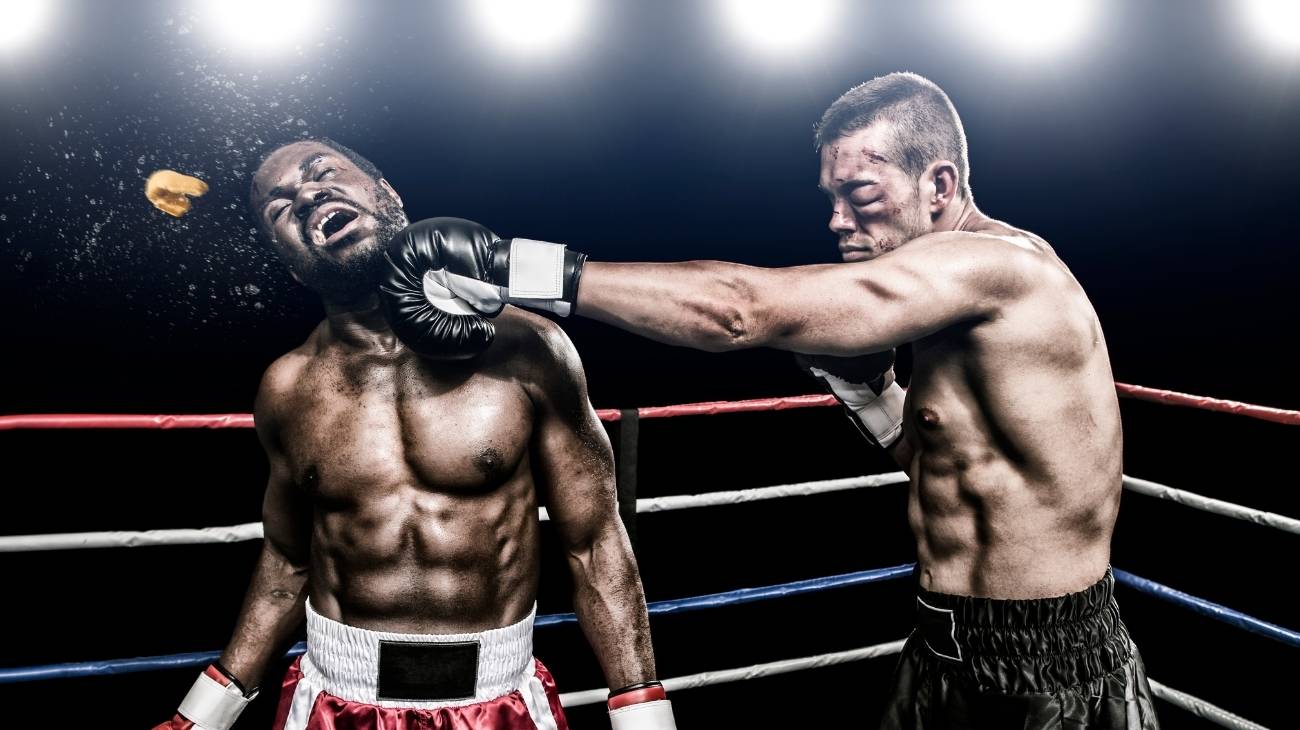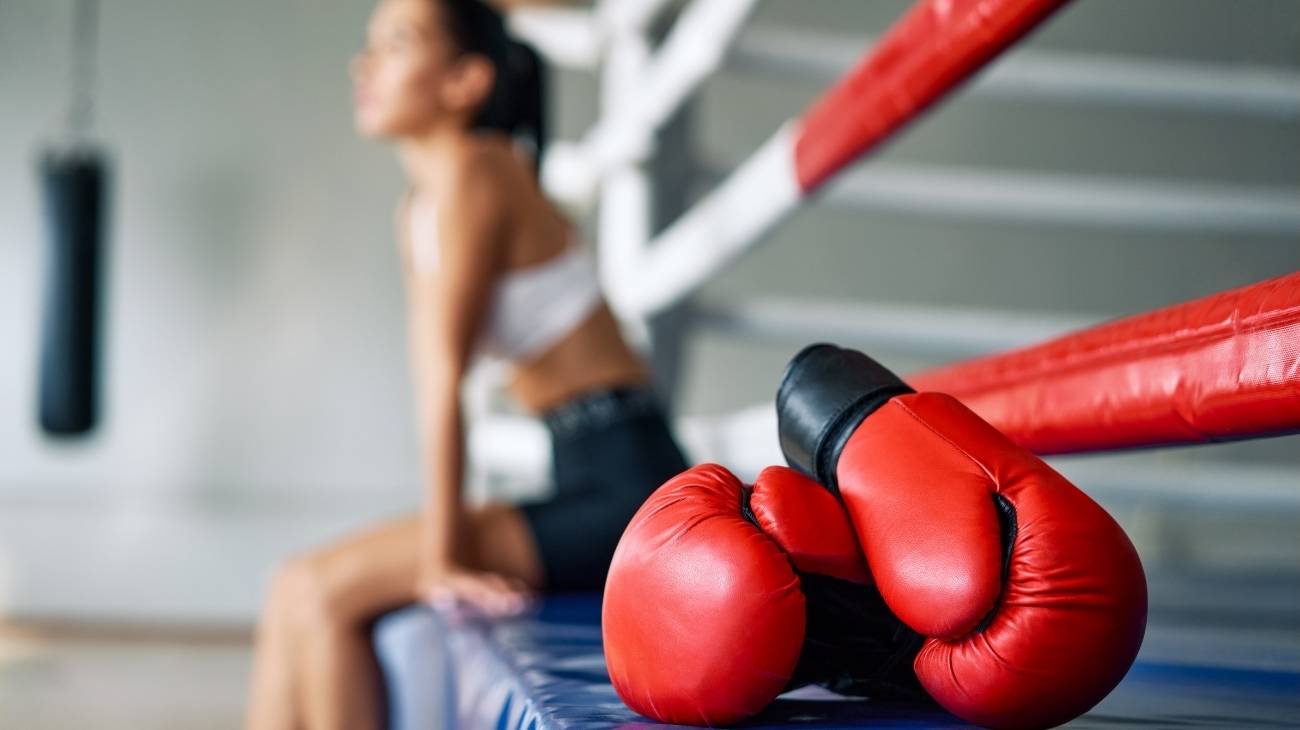Boxing is one of the most practiced sports in the world, but it is also one of the most demanding due to how rigorous the training can be, not to mention the amount of stress a boxer can be subjected to in each of his fights.
These conditions mean that injuries abound in the careers of these athletes, which can be as harmless as a cut on the face, or as lethal as concussions that eventually lead to degenerative diseases such as Parkinson's disease. In this article we show you the different treatments for each of them.
What are the most common types of injuries when practising boxing or contact sports?
In view of the great intensity with which boxers train and fight, and the demands this places on their bodies, there are various injuries to which all those who practice this sport can be exposed.
Here are some of the most common injuries seen in the ring:
- Facial injuries: Studies have shown that cuts to the face account for more than 50% of injuries during combat and can range from cuts to bruises, with the eyebrow being the most common site. Although they can be treated or heal over a period of days, some can have long-term consequences such as severe headaches, memory loss or dizziness. It is therefore recommended that when practising these sports you keep your concentration and your guard up, because if we neglect it for a moment it can have serious consequences.
- Boxer's fracture: This injury is very common in combat sports. It is caused by the bad technique we may use when hitting a hard object (or our opponent) and is produced by the fracture (in several fragments) of a long bone that connects from the index finger to the wrist called the 5th metacarpal. We must therefore ensure that we apply correct techniques to help prevent this type of injury, which accounts for 17% of injuries in the box.
- Nose fracture: This injury is very common in this type of sport, due to the large number of blows we receive, especially to the nose. Because the nasal bones are small, they can break very easily in the middle part of the bridge of the nose. This is not a sufficient reason to stop a fight, but it must be corrected or it can affect the ability to breathe freely through the nose.
- Eye damage: Eye damage accounts for 14% of boxer injuries, according to a survey of over 47 boxers in Victoria, Australia. Among the most common we can identify angle anomalies, pathological cataracts, macular lesions or retinal detachment. That's why you should always have a good defence technique that can help you keep your vision protected.
- Concussions: Concussions are the most dangerous injuries in contact sports such as boxing. Several studies have shown the same results; boxing can cause serious irreparable damage to the brain. Because it is a soft organ, it is surrounded by cerebrospinal fluid, which is responsible for cushioning the impacts we receive. However, this is not enough to absorb the more than 700kg of power that a blow from an opponent can generate. These injuries can have much greater long-term consequences, such as the so-called "Punch Drunk" syndrome or traumatic boxer's encephalopathy, a disease suffered for many years by the heavyweight champion Muhammad Ali.
Best products for boxing injury recovery
Bestseller
-
2 Ankle Compression Sleeve (Black/Gray)
£17,50 -
2 Ankle Compression Sleeve (Green/Navy)
£17,50 -
2 Ankle Compression Sleeve (Pink/Bordeaux)
£17,50 -
2 Knee Compression Sleeve (Black/Gray)
£17,50 -
2 Knee Compression Sleeve (Green/Navy)
£17,50 -
2 Knee Compression Sleeve (Pink/Bordeaux)
£17,50 -
2 Patella Knee Strap (Black/Gray)
£12,95 -
2 Patella Knee Strap (Green/Navy)
£12,95 -
2 Patella Knee Strap (Pink/Bordeaux)
£12,95 -
2 Thigh Compression Sleeve (Black/Gray)
£17,50 -
2 Thigh Compression Sleeve (Green/Navy)
£17,50 -
2 Thigh Compression Sleeve (Pink/Bordeaux)
£17,50 -
Acupressure Mat and Pillow (Black/Gray)
£44,95 -
Acupressure Mat and Pillow (Green/Navy)
£44,95 -
Acupressure Mat and Pillow (Pink/Bordeaux)
£44,95 -
Acupressure Pillow (Black/Gray)
£21,52 -
Acupressure Pillow (Green/Navy)
£21,52 -
Acupressure Pillow (Pink/Bordeaux)
£21,52 -
Back Support Belt (Black)
£29,95 -
Back Support Belt (Green)
£29,95 -
Back Support Belt (Pink)
£29,95 -
Foot Massage Roller for Plantar Fasciitis (Black)
£17,50 -
Foot Massage Roller for Plantar Fasciitis (Green)
£17,50 -
Foot Massage Roller for Plantar Fasciitis (Pink)
£17,50 -
Gel Eye Mask for Puffy Eyes (Gold/Black)
£9,95 -
Gel Eye Mask for Puffy Eyes (Orange/Pink)
£9,95 -
Gel Eye Mask for Puffy Eyes (Purple/Turquoise)
£9,95 -
High Density Foam Roller for Muscle (Black/Gray)
£24,95 -
High Density Foam Roller for Muscle (Green/Navy)
£24,95 -
High Density Foam Roller for Muscle (Pink/Bordeaux)
£24,95 -
Ice Massage Roller Ball (Black)
£34,95 -
Ice Massage Roller Ball (Green)
£34,95 -
Ice Massage Roller Ball (Pink)
£34,95 -
Microwave Arthritis Gloves (2 Mittens) (Hearts)
£25,50 -
Microwave Arthritis Gloves (2 Mittens) (Oxford)
£25,50 -
Microwave Wheat Bag for Neck & Shoulder Pain Relief (Hearts)
£21,50 -
Microwave Wheat Bag for Neck & Shoulder Pain Relief (Oxford)
£21,50 -
Microwave Wheat Bag for Neck & Shoulder Pain Relief (Sport)
£21,50 -
Microwave Wheat Bag for Neck Pain Relief (Hearts)
£17,50 -
Microwave Wheat Bag for Neck Pain Relief (Oxford)
£17,50 -
Microwave Wheat Bag for Neck Pain Relief (Sport)
£17,50 -
Pack 2 in 1: Foam Roller High + Soft Density (Black/Gray)
£24,95 -
Pack 2 in 1: Foam Roller High + Soft Density (Green/Navy)
£24,95 -
Pack 2 in 1: Foam Roller High + Soft Density (Pink/Bordeaux)
£24,95 -
Shoulder Support Brace (Black)
£21,95 -
Shoulder Support Brace (Green)
£21,95 -
Shoulder Support Brace (Pink)
£21,95 -
Soft Density Foam Roller for Recovery (Black)
£24,95 -
Soft Density Foam Roller for Recovery (Green)
£24,95 -
Soft Density Foam Roller for Recovery (Pink)
£24,95 -
Trigger Point Massage Stick (Black)
£12,95 -
Trigger Point Massage Stick (Green)
£12,95 -
Trigger Point Massage Stick (Pink)
£12,95 -
Wrist Brace (Black/Gray)
£17,50 -
Wrist Brace (Green/Navy)
£17,50 -
Wrist Brace (Pink/Bordeaux)
£17,50
How to apply the RICE therapy to treat first aid injuries in boxing?
The PRICE therapy is a simple method that can be applied by all those involved in sports and contact activities, as no one is exempt from suffering injuries of any kind. We must be very clear about this principle when applying it in order to obtain the desired results.
- Protection: the first step is to protect the affected area from further blows that could aggravate the injury. This is difficult to achieve in boxing, where a concussion is not a major reason to abandon the fight.
- Rest: This step is related to the previous one. By ceasing activities in the affected area for a minimum of 48 hours, we will be able to observe how the inflammation will go down and we will have a better diagnosis of the injury.
- Ice: the application of ice on acute injuries is highly recommended. Boxers are the athletes who use it a lot to treat blows, sprains and any other type of injury. Ice should be applied to the affected area every 5 minutes, at an interval of 25 to 30 minutes.
- Compression: the aim of compression is to keep the injured area stable, thus preventing swelling and oedema formation and improving blood pressure. For this you will have to wait until the fight is over as you are not allowed to use them during the fight.
- Elevation: It is important to keep the injured limb above the level of the heart. This will help to reduce swelling and bruising, because with the area elevated, it is very difficult for blood to reach the affected area.
Surgical treatments to cure serious or chronic injuries in boxers and wrestlers
Boxing makes us the target of various injuries to which we are exposed, some easy to heal and others so deadly that they can lead to death. That is why we will show you some of the surgical treatments that boxers undergo to treat their injuries, whether they are related to the face, head, shoulder, neck, hands or wrists once they cannot be treated with non-invasive methods.
Neck, head and facial injuries
Among the various injuries to the neck, head and face to which boxers are exposed, we can identify several serious injuries that require surgery or else can have a very fatal outcome.
- Head trauma surgery: Surgical treatment for this injury is delicate. First, an MRI scan will be performed to see the brain in more detail. Then an endoscope will be introduced to allow the camera to visualise the site to be treated. It is also a good idea to have a CT scan of the skull because of the sensitivity of this study with traumatic injuries that require surgery. Recovery time after the operation will depend on the damage repaired.
- Drainage of subdural haematoma: This injury is due to the accumulation of blood in the brain's envelopes, due to contusions and strong blows. In the surgery for this injury, 2 incisions are made in the skull with a depth of 5 to 8 millimetres, usually performed with a trephine. A drainage cannula is then placed to remove all the debris accumulated in the haematoma, and once everything has been drained, the wound is closed. The time spent in hospital can be from 5 to 7 days and, for a complete recovery, you must rest at home for 35 to 40 days after the operation.
- Rhinoplasty: The surgeon makes an incision at the entrance of the nose to lift and add cartilage that was destroyed by blows or to remove the nasal septum. The duration of this operation varies between one and two hours.
Shoulder injuries
The shoulders are one of the most used joints by boxers, so it is normal for them to be injured due to wear and tear. Most shoulder injuries can be treated with non-invasive therapies, but when they become a chronic problem, the need for surgery becomes inevitable.
- Shoulder arthroscopy: Shoulder or rotator cuff tendinitis often affects boxers. This operation is usually performed while the patient is fully anaesthetised. To repair the damage to the shoulder, the surgeon uses an instrument called an arthroscope, in which an opening is made in the shoulder of approximately 4 millimetres to insert the device that will allow the repair to be made without the need for open surgery.
- Operation for boxer's elbow: This is performed by making a 5 millimetre opening in the damaged elbow, applying general or local anaesthesia according to the doctor's preference. The fatty tissue is cut away and the insertion of the damaged extensor muscles is revealed for repair or replacement with grafts. The process can take approximately 30 to 40 minutes.
Hand and wrist injuries
Finally we have the wrists and hands, which are the weapon of all practitioners of this sport and of course one of the parts that suffer the most damage because giving a blow can be as painful as receiving it.
- Repair of the 5th metatarsal: An opening will be made in the hand to bring the toe back to its original place. The operation is usually performed because the bone has broken through the skin or fractured into several pieces, which in turn would require bone reconstruction or fixation using external instruments such as titanium pins. After the operation, it is necessary to wear a splint that will keep the hand stabilised for at least 6 weeks.
- Wrist fracture repair: If the injury is not too severe, the surgeon will only make a limited cut to try to move the bone back into position. If the injury is more severe, open surgery is done to completely manipulate the fracture to be treated. In many cases the surgeon will use an arthroscope to get a better view of the damage. It is important to mention that special metal screws and implants are used to fix the scaphoid bone in place until it has healed completely.
References
- Zazryn, T. R., McCrory, P. R., & Cameron, P. A. (2008). Neurologic injuries in boxing and other combat sports. Neurologic clinics, 26(1), 257-270. https://www.sciencedirect.com/science/article/abs/pii/S0733861907001272
- Ross, R. J., Casson, I. R., Siegel, O., & Cole, M. (1987). Boxing injuries: neurologic, radiologic, and neuropsychologic evaluation. Clinics in sports medicine, 6(1), 41-51. https://www.sciencedirect.com/science/article/abs/pii/S0278591920310577
- Bledsoe, G. H., Li, G., & Levy, F. (2005). Injury risk in professional boxing. Southern medical journal, 98(10), 994-999. https://www.researchgate.net/profile/Guohua-Li-7/publication/7472412_Injury_Risk_in_Professional_Boxing/links/59a44bafa6fdcc773a373b70/Injury-Risk-in-Professional-Boxing.pdf
- Loosemore, M., Lightfoot, J., & Beardsley, C. (2015). Boxing injuries by anatomical location: a systematic review. Medicina Sportiva: Journal of Romanian Sports Medicine Society, 11(3), 2583. https://medicinasportiva.ro/SRoMS/RMS/43/boxing-injuries-anatomical-location-review.pdf
- Jordan, B. D. (1987). Neurologic aspects of boxing. Archives of neurology, 44(4), 453-459. https://jamanetwork.com/journals/jamaneurology/article-abstract/586343
- Loosemore, M., Lightfoot, J., Palmer-Green, D., Gatt, I., Bilzon, J., & Beardsley, C. (2015). Boxing injury epidemiology in the Great Britain team: a 5-year surveillance study of medically diagnosed injury incidence and outcome. British journal of sports medicine, 49(17), 1100-1107. https://bjsm.bmj.com/content/49/17/1100.short
- Gartland, S., Malik, M. H. A., & Lovell, M. E. (2001). Injury and injury rates in Muay Thai kick boxing. British journal of sports medicine, 35(5), 308-313. https://bjsm.bmj.com/content/35/5/308.abstract
- Gissane, C., White, J., Kerr, K., & Jennings, D. (2001). An operational model to investigate contact sports injuries. Medicine and Science in Sports and Exercise, 33(12), 1999-2003. https://europepmc.org/article/med/11740290
- Tjønndal, A., Haudenhuyse, R., de Geus, B., & Buyse, L. (2022). Concussions, cuts and cracked bones: a systematic literature review on protective headgear and head injury prevention in Olympic boxing. European journal of sport science, 22(3), 447-459. https://www.tandfonline.com/doi/full/10.1080/17461391.2021.1872711
- Jayarao, M., Chin, L. S., & Cantu, R. C. (2010). Boxing-related head injuries. The Physician and Sportsmedicine, 38(3), 18-26. https://www.tandfonline.com/doi/abs/10.3810/psm.2010.10.1804





















































